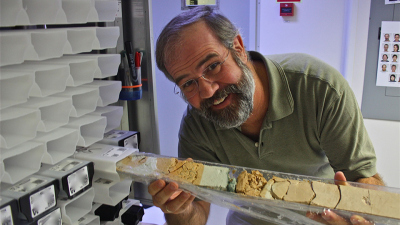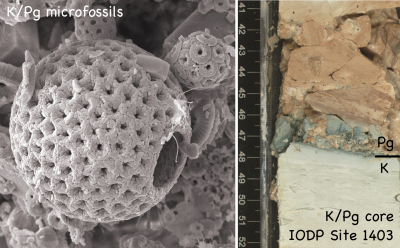Page path:
- Home
- Discover
- Archive News
- News 2020
- Asteroid instead of vulcanic eruptions
Asteroid instead of vulcanic eruptions
From MARUM, Dr. Barbara Donner, Dr. Ursula Röhl and Dr. Thomas Westerhold are involved in the publication. They have contributed to this comprehensive investigation with special empirical data sets and initial evaluations.
Pincelli M. Hull et. al.: On Impact and Volcanism across the Cretaceous-Paleogene Boundary. Science 2020. DOI 10.1126/science.aay5055




